Back in June, we sent out requests to select photographers to be part of a new series on X-equals regarding the use of natural lighting in their work.
We specifically asked them:
- How you approach using natural light
- The challenges you face when working with natural light
- Special tips and tricks you can share for getting great images using natural light
- How you prepare for and work through a shoot using natural light
- Equipment especially suited for working in varying natural light settings
The response has been great, and it gives us all a chance to delve into the thought processes and techniques some of the masters use in their work!
First up is Michelle Moore, who has taken the time to not only show us some amazing work, but the techniques and ideas that go into it – precisely what this series is all about!
Masters of Natural Lighting – Michelle Moore
If you combine all the questions about skin tones, post processing, and image quality, it all boils down to one subject: Lighting
I like to describe my style as organic, simple, soft and romantic. For me personally, when I’m on location shooting a senior, I don’t want a ton of extra gear with me. I may use a reflector from time to time, but that is only to shape, move, or diffuse, the available light. When working outside, I like to move around, interact with my subject, and be agile.
Having lots of extraneous gear would just get in my way.
First and foremost, it is ALL about your client. Get to know them.
Secondly it’s ALL about the light. I look for good light first, and then focus on the environment.
I don’t care if it’s raining or high noon, you can work with the light you have, and make it work. Sure, some situations are less ideal than others, but really, you can find the strength in every kind of situation.
High Noon
When it’s bright and sunny out, in the middle of the day, I rely on 2 different types of lighting and stylistic approaches:
- Open Shade
- Back-Lighting
Open shade is probably my favorite and most reliable/ideal situation to look for, especially when shooting in urban environments. I check first for location, lighting, and then work with my client to make sure to best flatter them, and light their face so their skin looks smooth, and eyes are sparkling. Even if you’re working at a park you can find some trees, or any big object to shade them. The best way to explain this light in an organic way, is to think of it wrapping around the building and reflecting off something across from your subject.
Check out these examples::
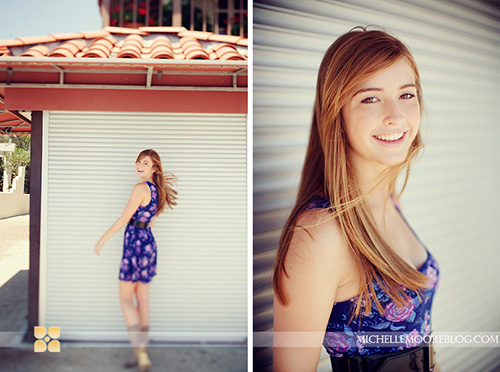
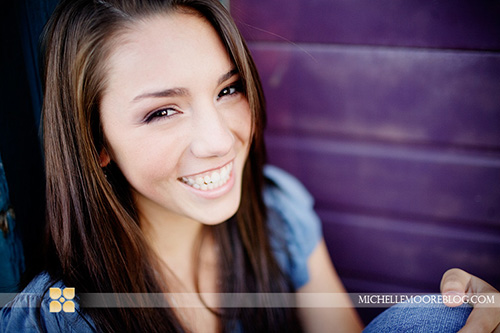
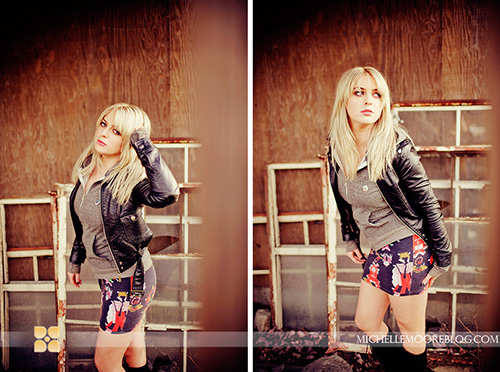
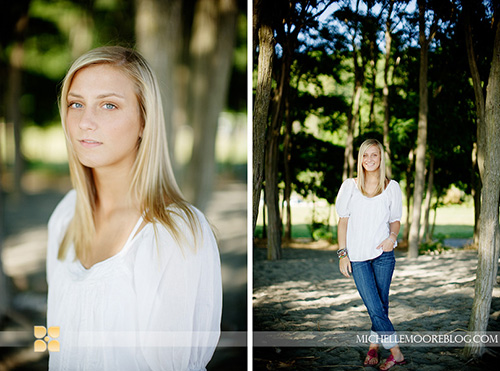
All photos © Michelle Moore
You should be able to tell that the subject is in the shade, and I’ve found the best angle to face them, so that the light is even and their eyes are sparkling (without the use of reflectors or flash). It takes a bit of practice to assess the situation, but with time, you’ll be able to spot ideal light at any time of day, and will feel confident placing your subject in the right spots.
My biggest secret (shhh….) is to wear something white when shooting in the sun so that I am in fact the reflector (no assistant needed!).
Back-lighting is another favorite of mine, and often times I like to play with sun flare, and rays of light bending around the subject from behind. This can be a fun one to play with, but I suggest not to rely on it as your only stylistic choice, because it’s not always for everyone. There are varying levels of flare, from the very artistic, to more subtle (and very powerful).
Often times you will want to have a reflector to fill in the subject’s face/body so that they are not too dark. I like to over expose all my images naturally, and then add a little bit of bounce (if possible) so that we can still see the face. If the sun is close to setting you can sometimes get away without it, but often times it really adds an extra punch.
My biggest secret (shhh….) is to wear something white when shooting in the sun so that I am in fact the reflector (no assistant needed!).
Check out thes examples::
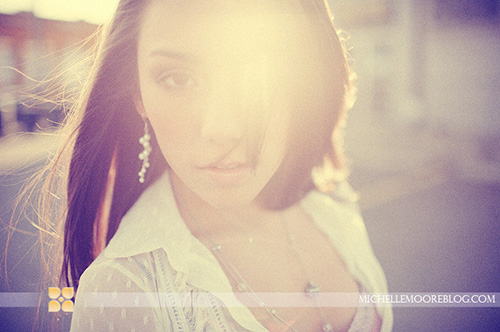
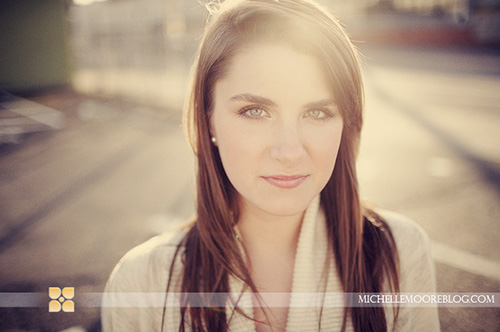
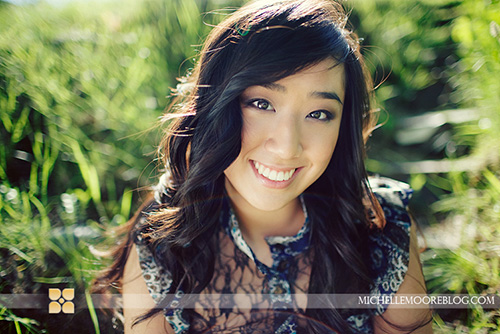
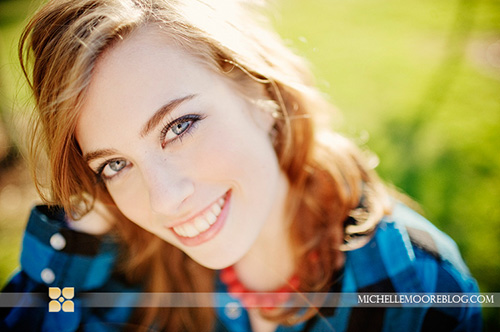
All photos © Michelle Moore
The first image is all flare, no reflector, as is the second image. The sun was close to setting in the second image, so we can still see enough of her face. The second two images I used a reflector or my shirt to bounce light back into the subject so we can see their beautiful eyes POP!
Overcast / Rain
Having a sky full of clouds is quite an ideal situation for photography, because it’s like having a giant softbox covering the sun. If you like flare and bright sunshine it can be a little disheartening, but you can still create amazing gorgeous images, and have free reign of locations that might not be ideal in the open sun.
Just be sure to move around and find those sweet spots where you can face your subject towards the brightest part of the sky and you’ll be set!
Sometimes you can get away without facing the sun (or where it would be), but be careful, you won’t be able to bounce as much light into their face as you would if there were no clouds.
Here are some examples::
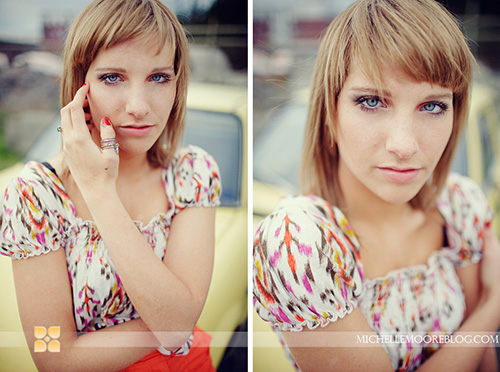
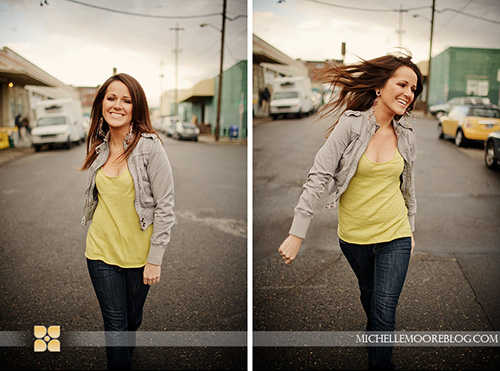
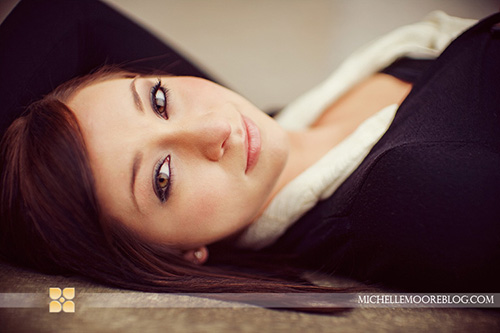
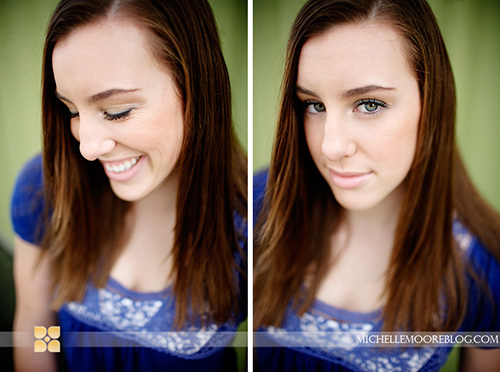
See how pretty and even that is? Oh and even if it’s raining, you can still have amazing light!! See our next example below:
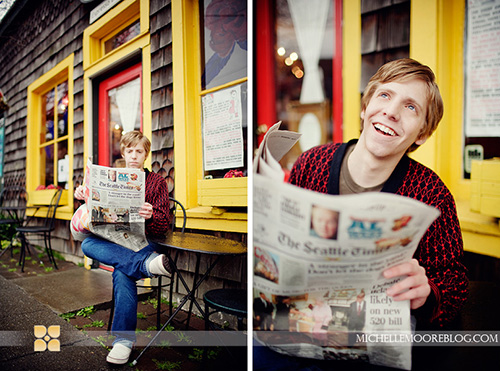
All photos © Michelle Moore
Reflector vs. Natural
Really quick, I want to compare two images, taken at the same location, but from different angles. The first image was taken with the sun directly behind the subject. Since this leaves for very little light on the subject’s face, I used a reflector to bring light to her eyes, and create that sparkle. In technical terms, when you are facing the sun, the background is going to be too many stops different than your subject, so by using the reflector you are “lighting” them in a way to bring the stop difference closer together.
Moving around a LOT will teach you quick how to see the best light, and keep working it.
This is why when you do this you can see the background, versus exposing for your subject and having a blown out background. That’s the down and dirty of it, and if you are completely lost, pick up a photography book, or find a class at your college/high school/community college.
This information is SO important and will really help you understand why this works!!
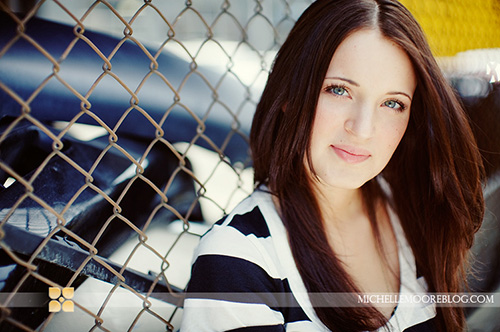
Then what happened at the shoot was the sun WENT BEHIND A CLOUD! I quickly looked at all the angles of Kaitlyn’s pose, and saw that by moving to her left, the sun was behind me and to my right it created a perfect diffused glow, and I could get just as gorgeous as a shot without having to use my reflector. This is why it’s so important to keep moving around your subject. Don’t get stuck in one pose and snap 80 shots of the same thing.
Moving around a LOT will teach you quick how to see the best light, and keep working it.
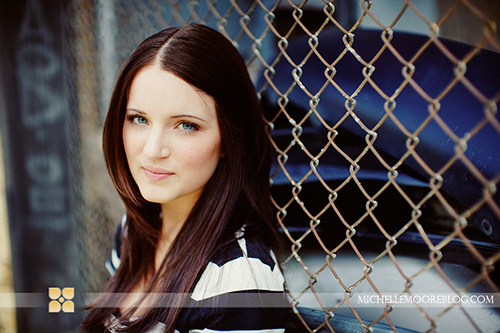
All photos © Michelle Moore
If you’ve made it this far, AWESOME!!
I could talk about lighting for DAYS, but the biggest fact I can stress is KEEP SHOOTING, and I mean A LOT. Always look for light, everywhere you go. Take mental note of the time of day, what angle the sun is at, and pretty soon it will start to come naturally. I guarantee that once you get better at lighting your images will start to pop that much more .
Please feel free to comment below, and hopefully I can jump in and clear up anything about this article.
Enjoy, and keep shooting!!


